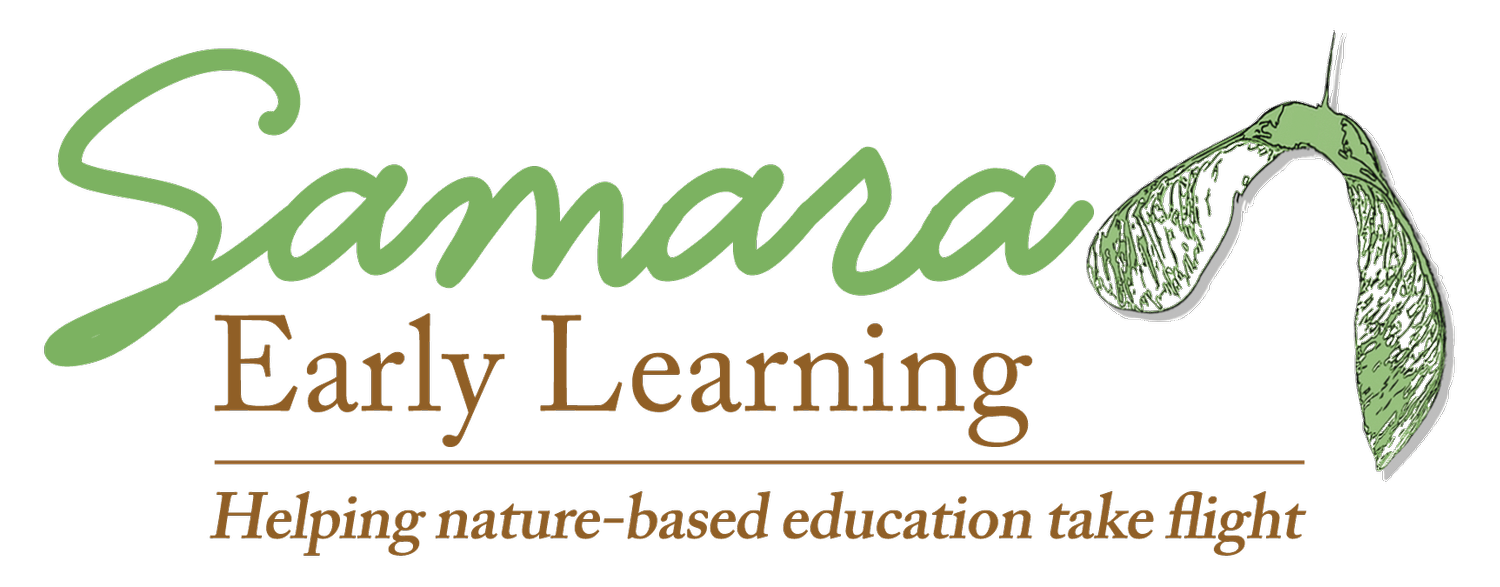Child-led play
This post originally appeared in Dr. Rachel A. Larimore’s weekly Samara newsletter on April 23, 2024. If you’re interested in receiving these emails, scroll to the bottom of this page to subscribe.
The focus on sustainability and children’s environmental literacy that I discussed in last week’s newsletter is only one of the two driving goals of the nature-based approach.
The second overarching goal of nature-based early childhood education is to support children’s holistic development.
The way we do this is by emphasizing two key elements of early childhood education: 1) Play-based and 2) Child-led.
Being play-based and child-led allows children to make their own meaning from their own experiences in the world–rather than being told by an adult what they should be thinking or feeling. In other words, we embody the idea that learning is a personal experience involving both our minds and hearts.
At first glance, it’s easy to think, “Oh, yeah. We’re play-based and child-led.” But I encourage you to really pause and reflect on the degree to which your program is play-based and child-led. Is it all of the time or some of the time?
Today and the rest of the week I encourage you to consider:
How much of the class day do children spend engaged in free play? What about guided play? Free play, the purest form of play, is led by children without adult interference. Whereas guided play is child-led while adults sometimes provide encouragement to extend and deepen the play. We can provide playful moments during teacher-led activities, but the choice to engage with that activity was made by the teacher. On a typical day, what’s the balance of the different types of play in the classroom?
How do teacher-led activities during the class day connect to or build on children’s curiosities*? In other words, where do the topics for group meetings, songs, stories, etc. come from? Are they based on the observations children made or questions they asked during this week’s experiences?
*I’ve started using “curiosities” instead of children’s “interests” when talking about emergent curriculum planning because I find adults sometimes get bogged down by the term “interest” as though it has to be a child’s passion. Whereas curiosity could grab their attention for five minutes and then they’ve gone off to explore something else entirely.
Keep changing lives,
Rachel
Rachel A. Larimore, Ph.D., Chief Visionary of Samara Learning

